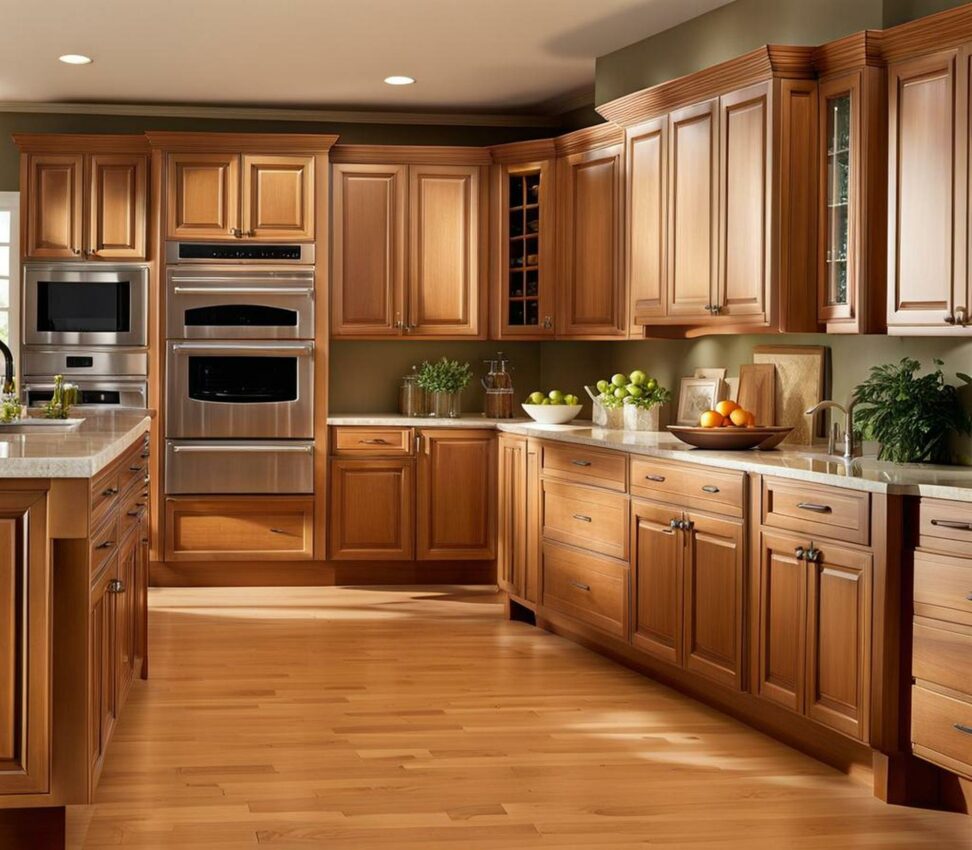How to Choose a Finish for Kitchen Cabinets That Will Still Look Flawless in 20 Years
Choosing the right finish for your kitchen cabinets is one of the most important decisions when renovating or building a new kitchen. The finish protects the wood from damage and keeps your cabinets looking pristine for decades to come. After 20 years of daily use, opening and closing doors, exposure to steam, grease, and more, you want your cabinets to still look as flawless as the day they were installed.
When selecting a finish for lifelong durability, four options stand out: polyurethane, high-quality paint, lacquer, and laminate. Each has their pros and cons in terms of protection from scratches, heat, moisture and other potential damage.
Polyurethane Finishes Form a Protective Barrier
Polyurethane is a clear, plastic-like coating made from polyurethane resin. When applied to kitchen cabinetry, it forms a smooth, durable finish that protects the natural beauty of the wood for many years to come.
Polyurethane is applied in multiple layers, with light sanding between each coat. Properly applied by brushing or spraying, it forms an exceptionally strong barrier against moisture, spills, heat damage and practically any other kitchen hazard you can throw at it.

The benefits of polyurethane for cabinets include:
- Extremely resistant to heat, chemicals, scratches and water
- Crystal clear finish maintains the wood's natural color
- Smooth surface resists yellowing for decades
- Only needs recoating every 3-5 years to maintain its flawless look
With proper prep work and application, a polyurethane finish can withstand decades of heavy use and still look amazing. Minor scratches and damages that occur over time can be easily repaired by sanding and recoating the affected area.
Applying Polyurethane for a Flawless Finish
While polyurethane itself is an extremely durable finish, the preparation and application process is equally important for long-lasting results:
- Cabinet surfaces must be sanded smooth to ensure the polyurethane bonds tightly.
- 2-3 coats should be applied using a high quality natural bristle brush or with professional spray equipment.
- Lightly sand with 220 grit sandpaper and wipe clean between coats.
- For a newly smooth surface after years of use, scuff sand and recoat every 3-5 years.
Painted Kitchen Cabinets Offer a Wide Range of Color Options
Painting kitchen cabinets opens up a world of color options not possible with clear finishes like polyurethane and lacquer. From bright whites to deep bold hues, painted cabinets can transform the entire look of your kitchen.
While not quite as naturally durable as polyurethane, high-quality cabinet paints deliver very good scratch, moisture and heat resistance. With proper preparation and application, painted finishes can maintain their like-new appearance for many years before needing a recoat.
Achieving a Flawless Painted Finish
Follow these tips for maximizing the durability and longevity of painted kitchen cabinets:
- Proper sanding, filling imperfections and priming provides the perfect foundation.
- Opt for cabinet-grade paints like alkyds and oils over standard latex wall paint.
- Apply multiple coats with a brush and mini roller for an ultra smooth finish.
- Add a protective clear top coat for enhanced moisture and scratch resistance.
With the right prep and products, painted finishes can maintain their good looks for years before needing a fresh coat of paint. Proactively touching up any damaged areas as soon as they occur will keep your cabinets looking their best.
Lacquer Finishes for a Crystal Clear Look
Lacquer finishes involve spraying a specially formulated lacquer resin onto kitchen cabinets in multiple ultra thin coats. The resulting finish is crystal clear and smooth as glass, allowing the natural wood grain below to shine through.
Pre-catalyzed and post-catalyzed lacquer each have their pros and cons in terms of practical application and durability. Post-catalyzed lacquers tend to provide harder, stronger protection from moisture, chemicals and heavy daily use. The curing process also lends itself to an even smoother finish.
Professional Spraying is Key
Applying lacquer properly involves specialized spray equipment and training. While brushing is possible for small DIY projects, paying a professional will ensure the highest quality, long-lasting results on full kitchen cabinet sets. The cost is well justified by decades of durable, flawless performance.
Laminate Cabinets Offer Great Durability with a Continuous Surface
Laminate cabinets provide a seamless, highly durable finish option for kitchens. Rather than finishing a solid wood surface, laminate cabinet boxes and doors consist of a synthetic material sealed over a wood substrate.
Available in a wide range of wood-like finishes from light natural maple to rich dark espresso colors, laminate resists practically every threat a kitchen can pose. Heat, moisture, grease, scratches and even rodents cannot penetrate the continuous laminate surface.
Benefits of laminate cabinets include:
- Extremely scratch and stain resistant
- Seamless surface repels moisture
- Easy to clean
- Holds up to heavy daily use
While laminate will never match the high-end look and feel of real wood, its durability and damage resistance helps it stay looking pristine and new for 20+ years.
When selecting a finish for lifelong durability, consider how well it protects against potential damages, as well as how it fits into your budget and overall kitchen design aesthetic.
For most homeowners, polyurethane and high quality painted finishes offer the best blend of long-lasting durability and affordable options that can be applied to real wood cabinetry.
Lacquer and laminate finishes each have unique strengths, with added costs justified for some by their extreme durability and unique looks. No matter which finish you select, following professional techniques for preparation and application will help your kitchen cabinets maintain their flawless, like-new appearance for decades to come.